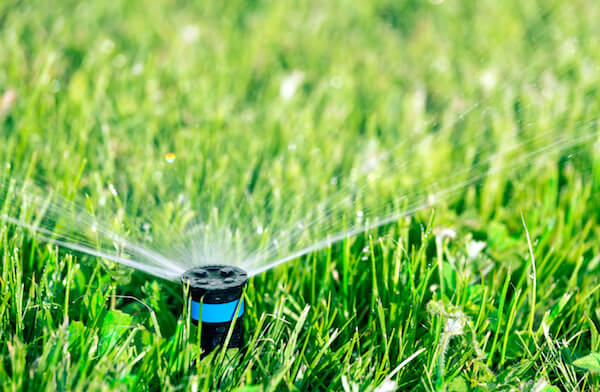
Tips for Watering Your Florida Lawn
The right amount of water makes a Florida lawn super lush and beautifully green. That’s why it’s important to make sure your lawn has adequate water during hot, dry weather. Watering your lawn keeps the grass from drying out and going dormant or dying.
How Much Water Does Your Sod Need?
Lawn experts agree that an average Florida lawn requires about three-fourths of an inch of water per watering two days a week to remain green and healthy. To determine how much water your lawn receives at one time, place containers at different spots on the ground within range of your sprinkler. Place the containers at the far corners that the sprinkler can reach, as well as close to the sprinkler.
Turn on the water and let it run for about 30 minutes. After the allotted time, turn off the water and measure the water in the container. The depth of the water in a container is an accurate indication of how much water your lawn received from the sprinkler. Be aware that the containers the furthest from the sprinkler will probably contain the least amount of water, and the nearest ones will contain the most.
Check Local Restrictions
Some counties in Florida have restrictions when it comes to landscape and lawn watering. Be sure and check with your local government in your community before watering your lawn because the water restriction rules can change frequently. It is essential to follow the water restriction rules because you could incur fines if you do not.
Taller Grass Is Better for Growth
Adjust the setting on your lawn mower higher and allow the grass of your lawn to grow taller so the root system will become larger and stronger. Grass that develops a more extended, more dense root system is much more resistant to drought conditions than shallow-rooted plants that can die quickly without water. Plus, taller grass doesn’t expend as much energy in trying to grow upward, and the longer length shades the lawn’s roots and discourages weed growth.
Best Time to Water Your Landscape
What time of day to water your grass is just as important as how much water your lawn receives. Lawn experts agree that the best time of day to water a Florida lawn is in the morning, and the earlier, the better. Watering your grass later in the day, mid-morning or afternoon, causes a lot of moisture loss due to evaporation, especially on a hot, sunny day. Watering on a windy day can also cause a lot of water to evaporate.
If you turn on your sprinkler to water your lawn too late in the afternoon or too close to dark, the grass won’t have a chance to dry out, and this can encourage fungus growth and other diseases. Watering early in the morning wets the soil but gives the grass a chance to dry during the day. Watering early is especially important in Florida where the humidity level is always high.
Encouraging the Growth of Fungus
Fungus remains dormant in the soil until activated by an abundance of water. When active, fungus takes its nourishment from the grass and can cause your lawn to turn yellow with stunted growth. Large patches of the lawn can die off and will need to be replaced. Lawn fungus is very hard to get rid of once it has become established, so prevention is the key to success.
Choosing a Type of Grass that Needs Less
One way to reduce the need for watering your lawn is to choose a variety of grass that needs less water for growth. No type of grass is totally drought resistant, only varieties that require much less water than others.
Choosing drought-resistant grass for your lawn is not a difficult option nowadays. New varieties allow the homeowner to grow a lush, green lawn that requires considerably less water than older types of lawn grass.
Contact Us for More Information
Duda Sod has been providing Florida homeowners and commercial properties with high-quality sod since the early 1970’s. We continue to develop drought-resistant grass varieties that need less water, fertilizer, and other maintenance chemicals to look lush and thrive in Florida’s climate.